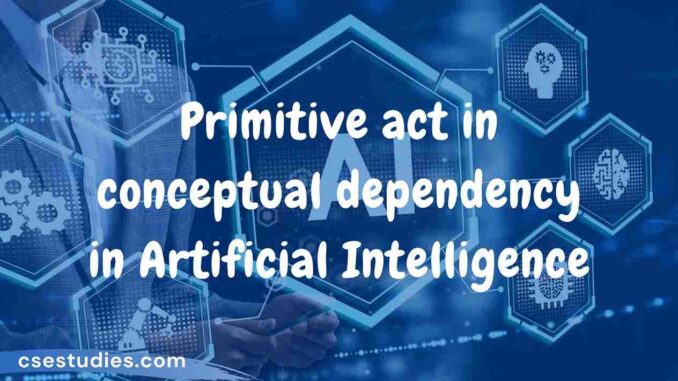
Conceptual Dependency originally developed to represent knowledge acquired from natural language input.
The goals of this theory are:
- To help in the drawing of inference from sentences.
- To be independent of the words used in the original input.
- That is to say: For any 2 (or more) sentences that are identical in meaning there should be only one representation of that meaning.
It has been used by many programs that portend to understand English (MARGIE, SAM, PAM). CD developed by Schank et al. as were the previous examples.
CD provides:
- a structure into which nodes representing information can be placed
- a specific set of primitives
- at a given level of granularity.
Sentences are represented as a series of diagrams depicting actions using both abstract and real physical situations.
- The agent and the objects are represented
- The actions are built up from a set of primitive acts which can be modified by tense.
Examples of Primitive Acts are:
- ATRANS— Transfer of an abstract relationship. e.g. give.
- PTRANS— Transfer of the physical location of an object. e.g. go.
- PROPEL— Application of a physical force to an object. e.g. push.
- MTRANS— Transfer of mental information. e.g. tell.MBUILD— Construct new information from old. e.g. decide.
- SPEAK— Utter a sound. e.g. say.
- ATTEND— Focus a sense on a stimulus. e.g. listen, watch.
- MOVE— Movement of a body part by owner. e.g. punch, kick.
- GRASP— Actor grasping an object. e.g. clutch.
- INGEST— Actor ingesting an object. e.g. eat.
- EXPEL— Actor getting rid of an object from body. e.g. ????.